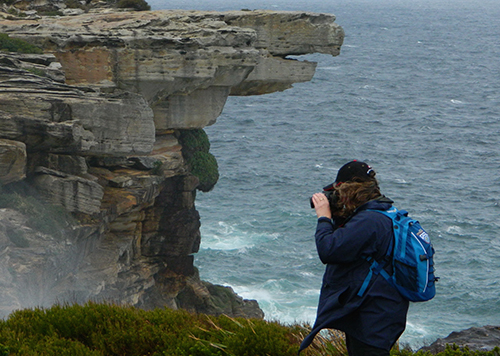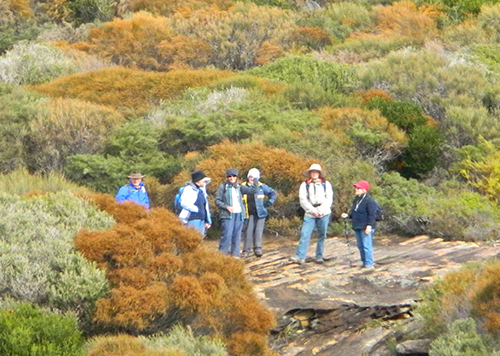Streamwatch grew out of a water quality testing program that was part of a Wetlands Teacher’s Kit for schools that was developed by Carolyn Pettigrew & Pamela Laing in 1984.
After an outbreak of the pathogens cryptosporidium and giardia in Sydney’s water supply in 1998, Sydney Water assumed oversight of the schools program and introduced Streamwatch.
The test kits that were supplied to volunteer Citizen Science groups and schools measured Dissolved Oxygen, Temperature, pH, Electrical Conductivity, Available Phosphate, Turbidity and Faecal Coliform levels in rivers and streams across the Sydney Basin. A dedicated Sydney Water employee trained groups and inspected sites for safety and Sydney Water managed the data and responded to readings that exceeded set parameters, it also supplied the replacement testing chemicals and filters at no charge.
Water Quality testing in the Royal and Heathcote National Parks began in March 2004 when five volunteers from the Cabin Communities Landcare group undertook training by the Sydney Water instructor at Audley. In that year, 14 tests were conducted at 7 separate locations within the cabin areas of the Park. In 2005, 19 tests were undertaken in the creeks the four cabins areas.
In October 2005 a further training sessions were conducted for the Royal’s other volunteers and five sites were tested within the Royal and Heathcote National Parks. In 2006 a Park ranger developed a water quality monitoring program for nine sites in the Royal and Heathcote National Parks and 26 site tests were conducted in that year.
The testing routine continued in the Cabins areas until 2010 with the last test conducted in these areas in 2013, during which time a valuable dataset from 71 site tests had been compiled. Testing continued on a quarterly basis at the remaining 9 sites in the Royal and Heathcote NP’s
On 24 October 2011 Streamwatch test data was used to criticise Sydney Water’s management of the Cooks River in Sydney (SMH) and just six days later it was revealed in Parliament that Sydney Water was to undertake a review of the Streamwatch program (SMH).
In December 2012 it was announced that Sydney Water was stepping away from Streamwatch (SMH) and that the program would be transferred to the Australian Museum with a reduced budget.
The Museum move had both its positives and negatives, the reduced budget meant that the number of groups had to be trimmed and the faecal tests, though costly, and arguably one of the main reasons why Streamwatch program was introduced, was replaced with macroinvertebrate abundance checks as an indicator of current and prior pollution events. The Museum also sought to bring a higher level of training and a rigidity in the testing regimes that aimed to withstand scrutiny from some quarters of the scientific profession who had shown distain for citizen science and the quality of such test results.
In 2018 the Australian Museum announced that it too would step away from the program and it was only after good groundwork by a number of committed individuals that a home has now been found for Streamwatch in the Greater Sydney Landcare Network.
As far a future testing in the Royal is concerned we hope that by the middle of 2020 that we will have resumed our testing regime, albeit, perhaps on a limited basis.
Voluntary activities run regularly and are a great way to help preserve and protect this beautiful area and to meet like minded people. Volunteering is fun!!
Volunteer expression of interest form
A Volunteer calendar is available for the next three months


